Shichimi Togarashi (Japanese 7 Spice Blend)
This post may contain affiliate links. See my disclosure policy.
The popular Japanese seasoning blend, this Shichimi Togarashi recipe is a copycat of your favorite store-bought blend but with FAR more flavor! It’s easy to make and is cheaper, fresher, and more vibrant than anything you’ll get at the store and will bring life and flavor to your food!
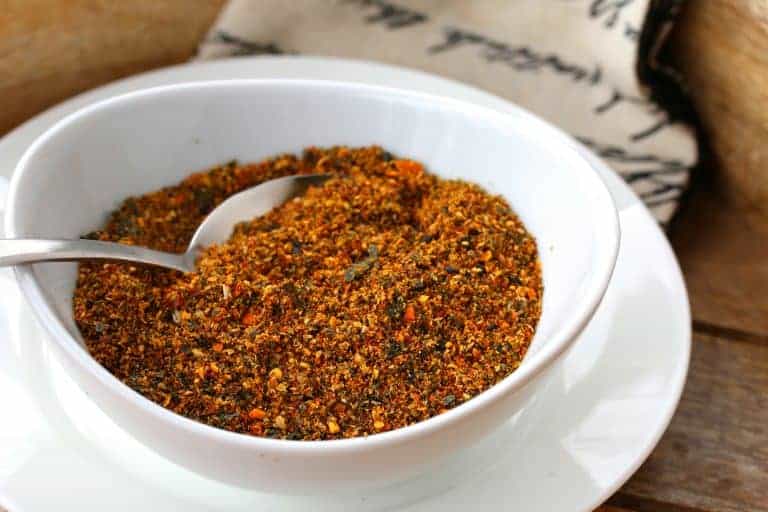
This popular Japanese spice blend dates back to at least the 17th century and has been used since as a favorite way to add flavor and heat to everything from noodles and rice dishes to grilled meats like yakitori as well as soups and tempuras.
What Is Shichimi Togarashi?
Shichi is Japanese for “seven” and togarashi means “peppers,” hence the name “seven spice” referring to the number of spices (plus nori) typically used in this blend. While many variations exist, shichimi togarashi typically includes red chili peppers, sanshō or sichuan peppercorns, dried orange peel, black sesame seeds, white sesame seeds, ground ginger, poppy seeds and nori (seaweed).
Shichimi togarashi and nanami togarashi are very similar. Both incorporate the same ingredients at slightly different ratios, the main difference being that nanami togarashi uses a lower ratio of orange peel. If making the latter, use less (about 1 teaspoon) of orange peel than this recipe for shichimi togarashi calls for.
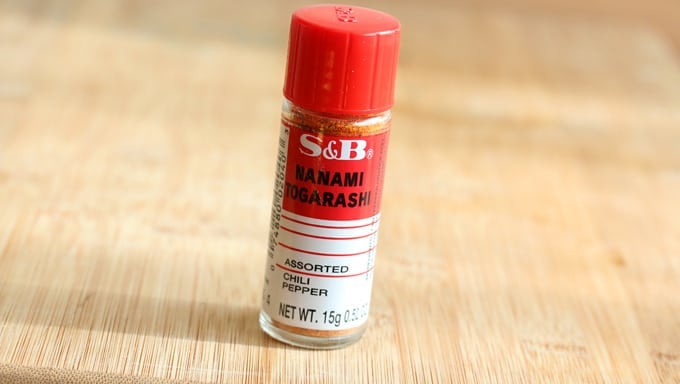
How To Use Shichimi Togarashi
Shichimi and nanami togarashi have a wide variety of uses. They’re commonly sprinkled over udon noodles, vegetables, steamed rice, eggs, added to grilled meats, chicken (e.g. yakitori) fish and marinades, used in rubs, soups, tempuras and salad dressings. They’re even sprinkled on popcorn, fries and used to season rice cakes and crackers.
Whether the dishes are of Japanese origin or not, shichimi togarashi is a versatile spice blend that will add life and flavor to a wide range of foods.

Shichimi Togarashi Recipe
Let’s get started!
We’re using red chili flakes, dried orange peel, sichuan peppercorns, black sesame seeds, white sesame seeds, poppy seeds and ground ginger. For optimal flavor, lightly toast the sesame seeds and sichuan peppercorns in a dry skillet until fragrant, being careful not to burn them. Let them cool completely.
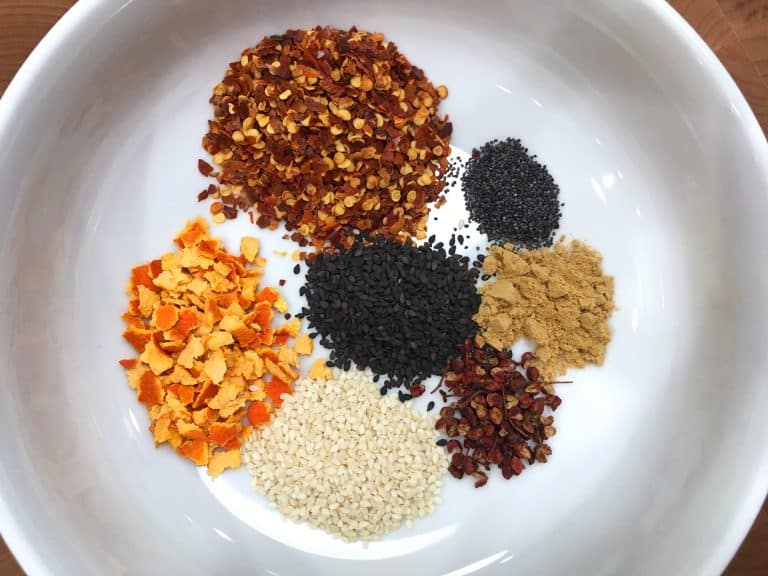
Select some good nori. Though hard to find, I was able to locate high quality Japanese nori (most nori on the market is from China). You only need a tiny bit to make shichimi togarashi but you can use the rest for sushi rolls (my husband’s favorite) or to snack on.
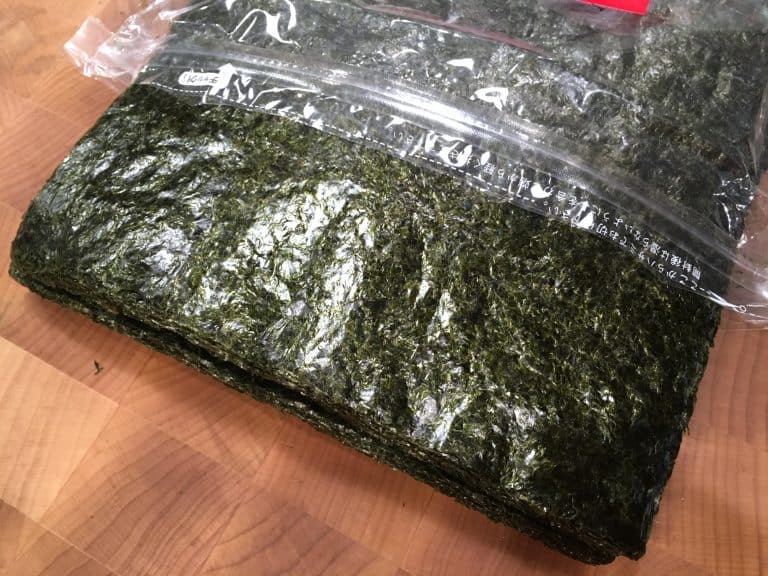

Once completely cooled, place all of the ingredients in a spice or coffee grinder and pulse until coarsely ground (make sure it’s coarse and not powder).
Store in an airtight container. For optimal flavor use within a few weeks.
Enjoy!
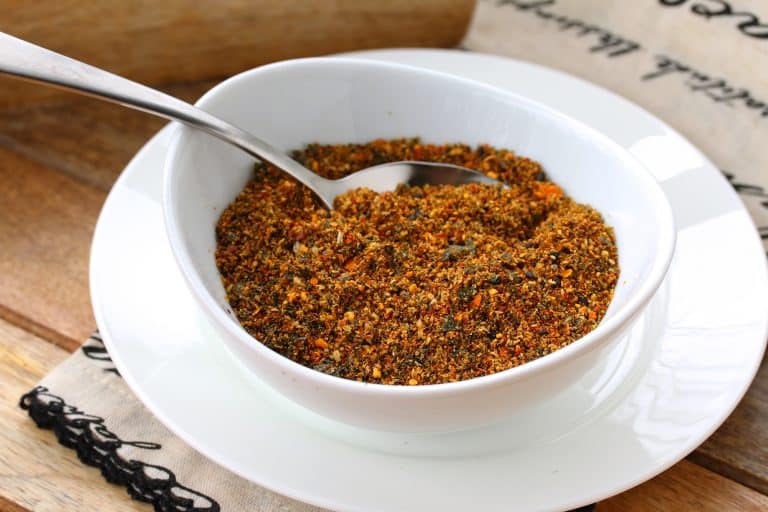
For more homemade seasoning blends from around the world try my:
- Sazon Seasoning
- Jamaican Jerk Seasoning
- Greek Seasoning
- Old Bay Seasoning
- Curry Powder
- Creole Seasoning
- Montreal Steak Seasoning
- Pizza Seasoning
- Garam Masala
- Chaat Masala
- Dukkah
- Za’atar
- Chili Powder
- Chinese Five Spice
- Shichimi Togarashi
- Mixed Spice
- Berbere
- Baharat
Save This Recipe
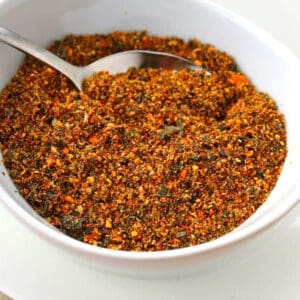
Shichimi Togarashi (Japanese 7 Spice Blend)
Ingredients
- 2 tablespoons red chili flakes (note: shichimi togarashi is HOT, use less red chili according to your heat preference)
- 1 tablespoon dried orange peel (use less, about 1 teaspoon, if making nanami togarashi)
- 2 teaspoons white sesame seeds
- 2 teaspoons black sesame seeds
- 1 teaspoon sanshō or sichuan peppercorns
- 1 teaspoon ginger powder
- 1/2 teaspoon poppy seeds
- 1/2 sheet roasted nori , crumbled
Instructions
- In a dry skillet, lightly toast the white and black sesame seeds, sichuan peppercorns and poppy seeds until fragrant, being careful not to burn them. Transfer to a bowl and let them cool completely.
- Place all of the ingredients along with the nori in a spice/coffee grinder and pulse until coarsely ground (be sure it's coarse and not a fine powder).Store in an airtight jar. For optimal flavor use within a few weeks.
Nutrition
Originally published on The Daring Gourmet May 3, 2018



















Can I sub lemon peel for the orange?
Hi Heidi, you can, it will just have a different flavor profile.
Just saw it today at Rite-Aid store in San Diego. Noodles (Ramin) are going crazy in popularity so be sure to look for it in more common market places.
Hi, nice recipe, thank you.
However, with all the good and precise info given, I’m somewhat disappointed to scarcely find anything precise on Naname, given the title, which suggests both mixes.
Some slight different ratios and reducing orange peel seems to me vague and inaccurate, compared with sichimi.
Wouldn’t you add a proper recipe for the Naname mix?
Cheers
Thanks for this article and recipe. Very interesting!
Hi, this is a great recipe! I’ve often tried to work out the difference between Nanami and Shichimi, so thank you for explaining. However I think you may have your wording mixed up in the third paragraph, shouldn’t it be “the main difference being that nanami togarashi uses a *lower* ratio of orange peel”? The recipe says to use less orange peel if making nanami so hopefully I’ve understood this correctly, thank you again!
Yes, Guy, you’re correct and thank you for catching that typo.
This is a lovely combination. We used it on Milkstreet’s Soba Noodles with Asparagus. It was perfect!
Thank you, JD, I’m so glad you enjoyed it!
Thanks for putting up a recipe. I remember being in Tokyo and having my own custom blend made for me right there! The one you need to watch out for is the Sanchō pepper…man, that can leave your tongue plenty numb if you put too much in.. Unless that’s what you want, haha
Thanks for this recipe, can’t wait to try it!
Question, though: You state main difference between shichimi and nanami is that “nanami togarashi uses a higher ratio of orange peel.” So is the amount of orange peel in your recipe typical of nanami or of shichimi? What ratio would be the other one?
Thanks!
Hi Robert, there are slight differences in the ratio of ingredients, including the orange peel. If you’re making nanami togarashi use only about 1 teaspoon of orange peel.